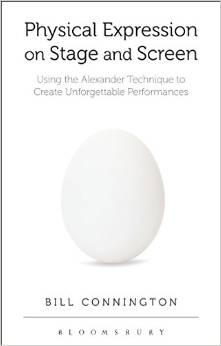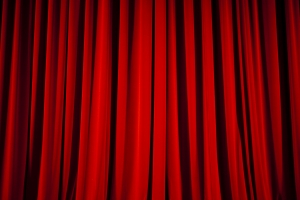 by Brooke Lieb
[*Please note, I am fully healed and my love of dogs is fully intact!]
by Brooke Lieb
[*Please note, I am fully healed and my love of dogs is fully intact!]
The Sunday before Father’s Day in 2005, I was bitten on my right leg in three places by a bulldog in the home of someone I knew. I had met the dog before a number of times over the years, and had entered the home of her owner without waiting for the woman to come to the door without incident many times.
After the dog released me and her owner pulled her away and closed her up in a room, I noticed my habitual reaction was to immediately focus on the idea that “everything is fine.” My parents were there, having arrived before me, and they and the dog’s owner seemed ready to join me in my habit. I was able to stand and walk on the leg. I saw a long scratch down the inside of my calf, which was bleeding; and evidence of bite marks on my calf and the outside of my thigh, which was swelling slightly, beginning to turn red as bruising began; and what seemed like bleeding under the skin where there were obvious teeth marks.
As moments passed, my assessment of the situation was that I had to pursue proper treatment for myself. Those around me were already soothing themselves with the idea that I was walking and the skin was not broken, so I was OK. I first suggested that I go to the hospital, as I imagined a tetanus shot was in order. The others seemed hesitant to take me there, as the wounds didn’t seem serious enough. The owner said she didn’t think I needed to go to the hospital or that there was any worry, as the dog was up to date on her shots and the skin was not broken. (In fact, on later inspection when I got home, I discovered the skin had been broken in five places.)
I did not want to go to the hospital, but I knew that was my habit of minimizing things. I pursued the subject, insisting that I should consult with a medical professional to determine the proper course of treatment. The owner offered to try to reach her doctor on the phone. She called and I thought the line didn’t answer. My mother later told me she believed there was a recorded message with further instructions and another number to call in an emergency, but the dog’s owner didn’t pursue the course beyond her first call. I suggested I call my own doctor, who was out of town. The doctor covering for her called me back after about 15 minutes and determined that the dog and I were up to date on our shots and my concern was infection. He didn’t tell me to go to a hospital, but did tell me how to clean the wounds and what to watch for that would indicate infection.
The owner had provided me with a bottle of betadine and paper towels to clean the wounds. I asked her for some ice as I saw there was swelling, and at first she told me in which drawer I’d find a plastic bag to put the ice in before she stepped in and did it for me.
I noticed throughout that I was in mild shock. My hands were shaking, and I had lost my appetite, even though I had been hungry when I arrived. I felt an energy of wanting to move, to get away from this environment, even though I stayed where I was. I was also acutely aware that I found the behavior of my parents and the dog’s owner contributed to my discomfort. I felt a distinct attitude coming from them that the event was over and all was fine now, while I was still very shaken. I felt unsafe in their presence and that any display of upset or fear would be met with a non-reaction.
When I arrived home a couple of hours later, my husband expressed what felt like an appropriate level of horror and concern and outrage that this had happened. I knew his response had an accurate level of energy and urgency to it. It took me a couple of days to feel the full intensity of my physical and psychic disturbance, and all the while, I had to keep recognizing my habit to minimize the events, my feelings, my thoughts and use my Alexander principles of awareness and direction to keep myself in the reality of the situation. My parents also woke from their somewhat numbed reaction and became more upset upon seeing my injuries in full color, and in response to how the dog’s owner had minimized the seriousness of the events.
For a few days, whenever I thought about the actual attack, I could feel the pain of the dog’s jaw biting my leg vividly. I could feel my fear and shock setting in as I struggled on the floor, calling for help and trying to scramble away from the dog. I wondered if I would have flashbacks and residual stress from the event. That didn’t happen and I believe it was because I sought out contact with people who would express the outrage, and empathize with me, whether or not they saw the actual wounds or had ever been bitten by a dog themselves.
Acting against my habit in this case has had many benefits. I have been much more proactive in dealing with many different circumstances that I would habitually avoid or let go un-addressed at the expense of my own comfort and well-being.
About a month later, on July 7, 2005, I was watching a film clip of a man injured in the subway bombings in London. As I watched the police help him walk and saw the cuts on his face and his bandages, I recalled the shock and mild trauma that I had experienced from the bite, and felt I could empathize much more fully with the pain, fear, and shock he must be feeling. I could touch into those feelings, while not re-living the moment as real or losing my present self in the memory. I fully credit my skill in the principle of the Alexander Technique with my ability to feel more fully and know I was safe.
[author] [author_image timthumb='on']http://www.acatnyc.org/main/wp-content/uploads/2014/01/Brooke1web.jpg[/author_image] [author_info]N. BROOKE LIEB, Director of Teacher Certification since 2008, received her certification from ACAT in 1989, joined the faculty in 1992. Brooke has presented to 100s of people at numerous conferences, has taught at C. W. Post College, St. Rose College, Kutztown University, Pace University, The Actors Institute, The National Theatre Conservatory at the Denver Center for the Performing Arts, Dennison University, and Wagner College; and has made presentations for the Hospital for Special Surgery, the Scoliosis Foundation, and the Arthritis Foundation; Mercy College and Touro College, Departments of Physical Therapy; and Northern Westchester Hospital. Brooke maintains a teaching practice in NYC, specializing in working with people dealing with pain, back injuries and scoliosis; and performing artists. www.brookelieb.com[/author_info] [/author]


 by Witold Fitz-Simon
On the face of it, Yoga and the Alexander Technique would seem to be two completely different disciplines. Comparing them would be like comparing a dog with an iPad. Although they originated in very different times from very different cultural traditions, and would appear to have emerged out of very different intentions, thematically, they do have a lot in common. In a lecture given in 1985,
by Witold Fitz-Simon
On the face of it, Yoga and the Alexander Technique would seem to be two completely different disciplines. Comparing them would be like comparing a dog with an iPad. Although they originated in very different times from very different cultural traditions, and would appear to have emerged out of very different intentions, thematically, they do have a lot in common. In a lecture given in 1985, 
 by Brooke Lieb
This summer, I decided to check some items off my bucket list while I am healthy, happy and had time. I spent Tuesday afternoons in "Acting for the Camera" in the afternoons, and in a Stand Up Comedy class in the evenings. Although I have a Bachelor's Degree in Musical Theater Performance, I haven't worked on a text or studied acting technique in over 25 years. I have never done Stand Up. The first point at which my AT skills kicked in was the act of registering. I tend to think inhibition is about overtly stopping from impulsive and habitual behavior. In this case, inhibition helped me override the habit of keeping in my comfort zone, to do something new, different and unknown.
by Brooke Lieb
This summer, I decided to check some items off my bucket list while I am healthy, happy and had time. I spent Tuesday afternoons in "Acting for the Camera" in the afternoons, and in a Stand Up Comedy class in the evenings. Although I have a Bachelor's Degree in Musical Theater Performance, I haven't worked on a text or studied acting technique in over 25 years. I have never done Stand Up. The first point at which my AT skills kicked in was the act of registering. I tend to think inhibition is about overtly stopping from impulsive and habitual behavior. In this case, inhibition helped me override the habit of keeping in my comfort zone, to do something new, different and unknown.



